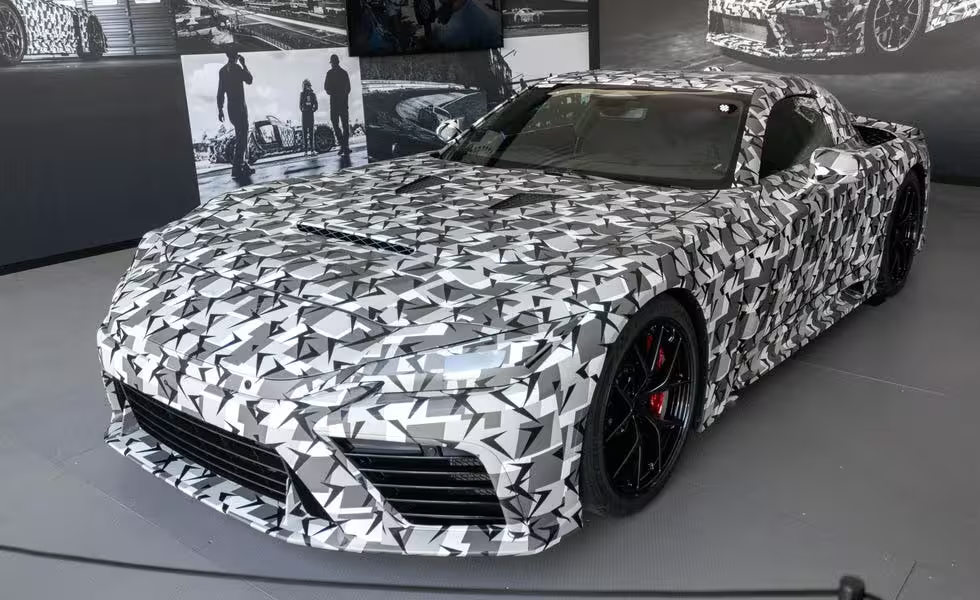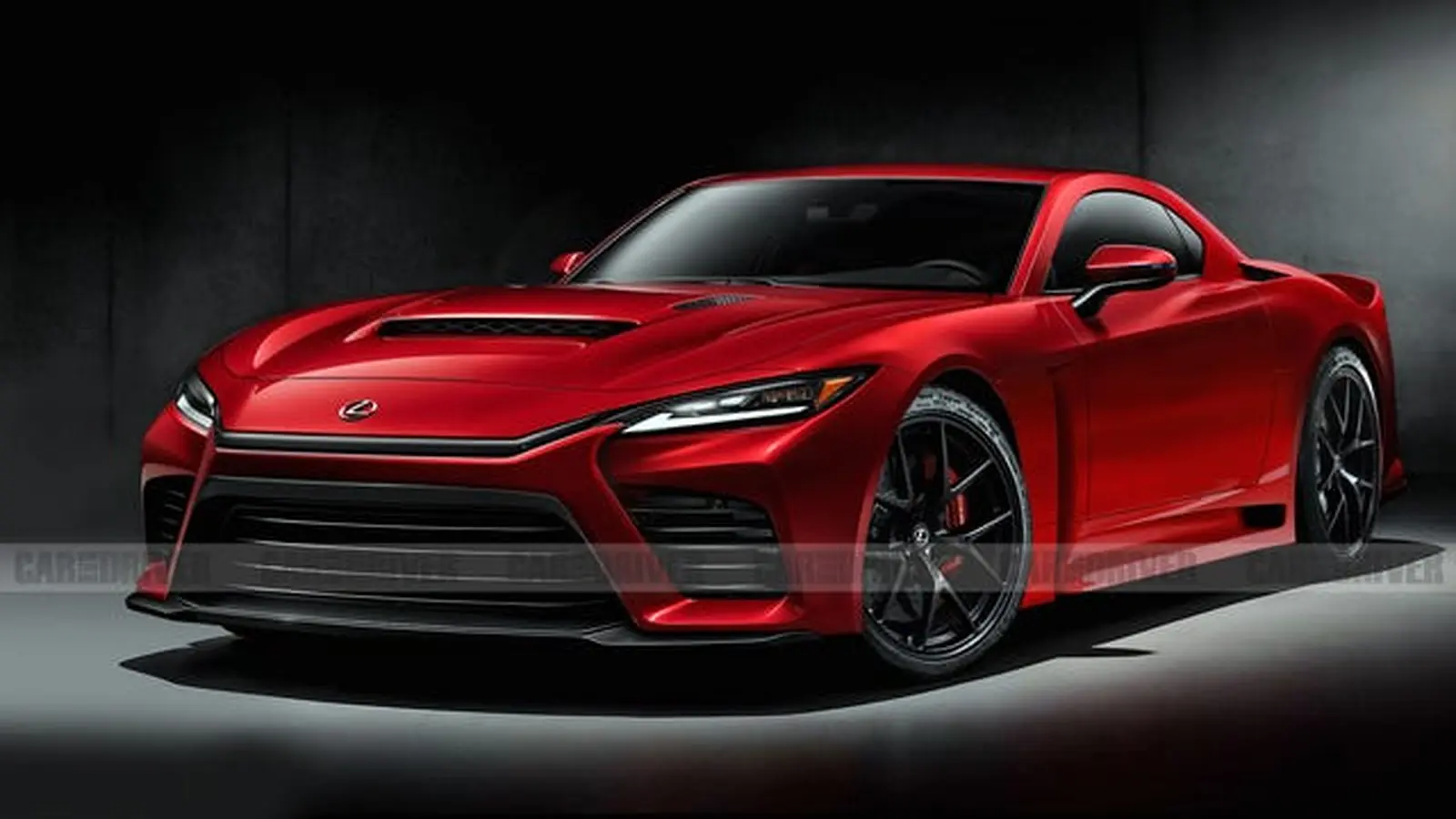6 Minutes
What it is
The 2027 Lexus LFR is shaping up to be the brand’s next halo sports car — an indirect successor to the legendary LFA — combining dramatic proportions, a hybridized twin‑turbo V‑8 powertrain, and a dedicated GT3 race program. While Lexus is keeping exact production volumes under wraps, the LFR is expected to be a low‑volume flagship that repositions Lexus at the top of its performance ladder.
Why it matters
After more than a decade without a true halo model, Lexus is preparing to bring back a high‑performance icon. The timing is significant: Lexus has been scaling back some of its traditional sporty models — the RC F coupe is slated to end after 2025, the hybrid LC500h has been discontinued, and the future of V‑8 models like the LC500 and IS500 F Sport Performance is uncertain. A successful LFR would restore a pure performance focus to the lineup and give enthusiasts a modern alternative to Europe’s supercar offerings.
Caleb Miller|Car and Driver The LFR was shown as the Toyota GT concept at the 2025 Goodwood Festival of Speed.
Design and platform
The LFR’s styling is expected to be bold and proportionally dramatic, with a long hood, wide track, and aggressive aerodynamic detailing befitting a flagship sports car. Lexus has not confirmed the chassis architecture. Observers anticipate either a ground‑up new platform or a heavily revised evolution of the TNGA‑L architecture (the structure that underpins the LC500). What is clear is that Lexus intends to homologate a race‑ready GT3 variant alongside the road car, which will drive many of the car’s structural and aerodynamic choices with endurance competition in mind.

Platform and track intent
Developing a GT3 counterpart suggests stiffening the chassis, optimizing weight distribution, and designing modular aerodynamic hardware that can serve both road and race applications. Expect advanced materials and suspension tuning directed at endurance racing demands such as the 24 Hours of Le Mans and the 24 Hours of Daytona.
Powertrain and performance
Lexus has not released formal powertrain figures, but industry signals point to a hybridized twin‑turbo V‑8 rather than a return to a naturally aspirated V‑10. A V‑8 hybrid layout makes sense for packaging, torque delivery, and improved lap times while still delivering a dramatic exhaust note and strong straight‑line performance.
Caleb Miller|Car and Driver Lexus is also working on a GT3 race car version, shown as the Toyota GT Racing concept at the 2025 Goodwood Festival of Speed.
Estimated engine and output
Possible technical directions include an updated variant of the 5.0‑liter V‑8 already used in the RC F, IS500, and LC500, or a larger displacement unit derived from the RC F GT3 program (which has used a 5.4‑liter race block). With twin turbochargers and hybrid assistance, reasonable estimates put combined output north of 600 hp from the internal combustion element, with peak system power potentially approaching or exceeding 800 hp when electric boost is added. Torque characteristics, launch control, and regenerative strategies will play crucial roles in real‑world performance and lap times.
Design details and interior
Expect the LFR to blend Lexus’s luxury credentials with a focused, driver‑centric cockpit. Materials likely include lightweight composites and performance‑grade carbon fiber for body panels and structural reinforcements, alongside Alcantara, bespoke leather, and precision metalwork inside. The layout should prioritize ergonomics for both road and track, with configurable driving modes, adaptive aerodynamics, and race‑inspired instrumentation available as standard or optional equipment.
Vehicle specifications (estimated)
- Powertrain: Twin‑turbocharged V‑8 with electric hybrid assist (plug‑in capability unknown)
- Estimated combined power: 700–900 hp (manufacturer figures pending)
- Layout: Front‑mid engine, rear‑wheel drive or possibly rear‑biased AWD for traction
- Chassis: New or heavily revised TNGA‑L architecture with race‑derived strengthening
- Performance hardware: Adaptive dampers, carbon‑ceramic brakes, active aero
Market positioning and pricing
The LFR will occupy the upper echelon of Lexus pricing and ambition. Lexus’s experience with the LFA — which listed around $375,000 and sold 500 units over three years with some difficulty — shows the brand can build a halo but may struggle with customer perception at supercar price points. Early estimates place the LFR’s starting price in a broad band from roughly $250,000 on the conservative end to as much as $550,000 for ultra‑high‑spec versions. Final pricing will hinge on performance, materials, and production volume.
Competition and comparisons
Depending on spec and price, the LFR could compete with mid‑engined supercars like the Ferrari 296 GTB and McLaren 750S, but it may more realistically slot into the high‑performance GT segment alongside hybridized coupes such as the Chevrolet Corvette E‑Ray and the Mercedes‑AMG GT63 S E Performance. The LFR’s front‑engine architecture and hybrid assistance could give it a distinct driving character compared with European mid‑engined rivals.
What could go wrong
There are commercial and technical risks. Luxury buyers may still hesitate to pay extreme prices for a Lexus badge, despite the brand’s improved performance credibility. On the technical side, balancing hybrid weight penalties with racing intentions will be a major engineering challenge; delivering the visceral sound and analog feel many enthusiasts expect while achieving cutting‑edge lap times will require careful compromise.
Estimated arrival and final thoughts
Lexus is widely expected to unveil the production LFR for the 2027 model year. Toyota’s decision to show a camouflaged prototype and the Toyota GT concept at Goodwood suggests a public reveal is imminent. If Lexus can successfully reconcile luxury refinement with motorsport‑grade performance, the LFR could restore the marque’s halo status and give global enthusiasts a compelling alternative in the hybrid supercar era.
Source: caranddriver


Leave a Comment